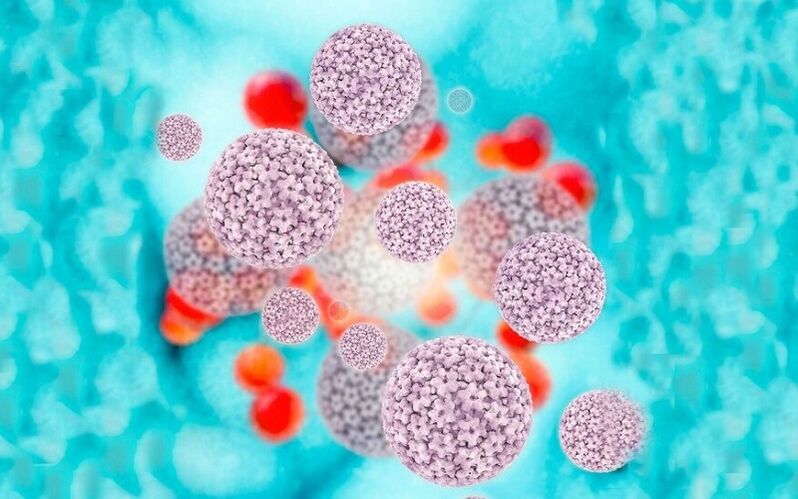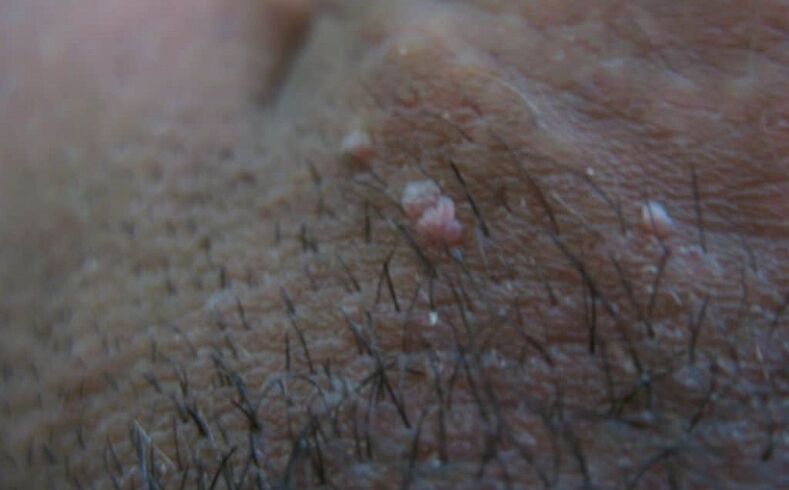Papilloma on the labia is a rather delicate matter, causing dissatisfaction with oneself and a decrease in the quality of sex life. They are difficult to hide, can cause inconvenience during intercourse, so the papilloma needs to be removed. In addition, in some cases, genital warts in women can be a very dangerous risk of developing into cancer.
Reasons for the formation of papillomas
Papilloma on the labia or genital warts are the result of infection with the human papilloma virus. In total, there are more than 100 strains of this virus, which differ in the type of cancer and the degree of risk of developing cancer.
The virus enters the body mainly through sexual contact with an immunocompromised basis. At the same time, a man who has infected a woman may not show obvious signs of the presence of the virus, since male papillomas do not always appear on the skin.
The decline in immunity occurs in the context of newly transferred infectious diseases, vitamin deficiency or chronic stress. Papilloma on the labia can be caused by a decrease in local immunity, by various inflammatory diseases of the genital organs, including thrush and bacterial vaginosis. At the same time, for infections, it is enough to use other people's personal hygiene products, so that after a while, unsightly pimples will appear on the labia.
So, despite the fact that the virus is transmitted from person to person, the reasons for the appearance of papillomas on the labia in women are as follows:
- reduced immunity after ARVI, pneumonia, influenza or tonsillitis;
- vaginal infections;
- failure to observe personal hygiene;
- stress;
- unbalanced diet;
- the presence of a focal chronic infection in the body;
- promiscuous sex.
All these factors lead to a decrease in immunity, both general and local. As a result, the body becomes susceptible to various negative influences and is unable to fight the human papilloma virus.
Usually, the virus does not manifest itself, limited by human immunity. This is only true if the person is completely healthy. After that, the virus may remain asymptomatic in the body for a long time. The formation of papillomas will occur on the basis of impaired immunity. If this does not happen in the coming years, the body may be able to deal with the virus on its own, however, recovery usually takes at least 18 months.

What do genital warts look like?
How a woman's labia majora presents depends on several factors:
- type of virus;
- the concentration of the virus in the body;
- growth localization.
The formation of papillomas on the labia is due to the influence of oncogenic or conditional strains of viruses (16, 18, 31, 32, 45 and others). It is easy to understand what such papillomas on the labia look like, knowing what papillomas are. These are small papillomas with jagged edges that protrude above the mucosal surface. They usually do not differ in color, or are slightly lighter than the mucous membranes. Manifestations of the papilloma virus on the labia, which provoke the growth of genital warts, can spread to the perineum, vulva and vagina of women.
Condoms are always formed only on mucous membranes. Papillomas on the labia in women do not appear, they are formed only in areas with a thin epidermis.
Papules are small balls on the legs that protrude above the skin. They have smooth contours of the correct shape, which can be slightly lighter or darker than the rest of the skin. When pressed, the papillomas on the labia are painless, under the fingers the homogeneous structure of the growths is felt. This type of cancer occurs in the inguinal folds and on the labia.
Almost any known method is used to remove papillomas on the labia, since the risk of burning or deep damage to the epidermis is minimal. Treatment of papillomas on the labia is done comprehensively, as such papillomas are potentially dangerous.
Warts can form in the following areas:
- small labia;
- vulva;
- vagina;
- Cervical;
- anus;
- Crotch;
- urethra.
Papillomas on the labia are not different from papillomas on other parts of the body, while papillomas or foreskin on the vulva and vagina are difficult to notice.
The formation of papillomas on the labia during pregnancy is associated with decreased immunity. In this case, timely treatment of the consequences caused by the HPV virus plays an important role, otherwise there is a risk of infecting the baby when passing through the birth canal.

Why are papillomas dangerous?
Sex and the human papillomavirus on the labia in women are directly related. First, in contact with damaged mucous membranes, there is a risk of transmitting the virus to sexual partners. Second, with friction during intercourse, papillomas and foreskin can be damaged, accompanied by pain. There is a risk of infecting the papilloma, while it becomes inflamed and can begin to degenerate into cancer.
There are cases where, due to repeated injuries, a woman has a very large papilloma on the labia. No woman was insured against such a risk. Large clumps are dangerous and should be removed first.
Papillomas on the mucous membranes of the labia and in the vagina can lead to the development of cervical cancer. This is due to the activity of the papillomavirus, which is manifested by excessive division of epithelial cells on the labia and other parts of the mucous membrane. In this case, damage to the cells of the cervix develops in several stages. First, erosion is formed by the HPV virus on the labia, then it turns into dysplasia, which is a precancerous condition. Lack of timely treatment of dysplasia will lead to the development of cervical cancer.
It should be understood that any papilloma on the mucous membrane of the labia is a potential danger. Papillomas themselves can degenerate into cancer and not only cause cervical cancer. Signs of malignant papilloma are an increase in the size of the nodules, causing pain and itching, discharge with an unpleasant odor from the growing body and darkening of the diseased skin. If you notice such symptoms, you should consult your doctor as soon as possible - an oncologist, a gynecologist or a dermatologist.
Treatment and removal of papillomas
The treatment for papillomas on the labia depends on their number and size. You should not self-medicate, but should consult a doctor, who will tell you in detail what to do to remove and prevent the reappearance of papillomas on the labia.
To remove papillomas on the labia need consistency. First, the activity of the virus is suppressed, then its own growth is eliminated and, if necessary, immunostimulating therapy is performed. To accurately determine the treatment sequence, PCR analysis is required, which shows the activity level and concentration of the virus and allows you to identify the virus strain.
If a woman is found to have a potentially dangerous strain of the virus, aged 16 or 18, complex treatment is required. In this case, each removed papilloma is sent for histological analysis and the entire cervix is examined for changes in the epithelium.
How to remove papillomas on the labia depends on the exact location. Skin cancer is eliminated in any of the available ways - from surgical to folk. This is because the skin of the labia is thick enough that complications after removal are rare. It is fair to say that the formations on the labia in most cases are not dangerous to health and do not cause cancer.
Removal of genital warts on mucous membranes is carried out with the help of a laser or radio wave method. These two methods are considered the most gentle, and at the same time do not block the blood vessels feeding the tumor, so the risk of bleeding is minimal. When removing the tumor from the cervix or vagina, it is necessary to do a histological analysis to exclude the onset of the pathological process.

You should consult your doctor about how to get rid of papillomas on the labia. If the analysis shows a high concentration of the virus in the body, there is a risk of re-formation of genital warts, therefore, complex therapy is carried out, consisting of three stages.
- After the virus strain was identified, the woman was prescribed antiviral and immunomodulatory therapy. This is necessary to suppress the virus and minimize the risk of papilloma formation.
- After drug treatment, which takes an average of several weeks, the papilloma is removed by a method chosen and agreed with the doctor. Laser or radio wave removal is recommended.
- Some time after removing the growths, the analysis should be repeated. If viral levels remain high, a second course of drug therapy will be prescribed.
Medications used to treat papillomas are available in the form of tablets and ointments. Antiviral ointments with immunomodulatory properties are recommended for the treatment of skin papillomas. If tumors appear on the mucous membranes, taking tablets will be indicated.
As a rule, after removal of papillomas and drug treatment, the body heals itself after a few months or years. To avoid the re-formation of papillomas, a woman must observe the rules of hygiene, maintain her own immunity and avoid unprotected sex.














































































